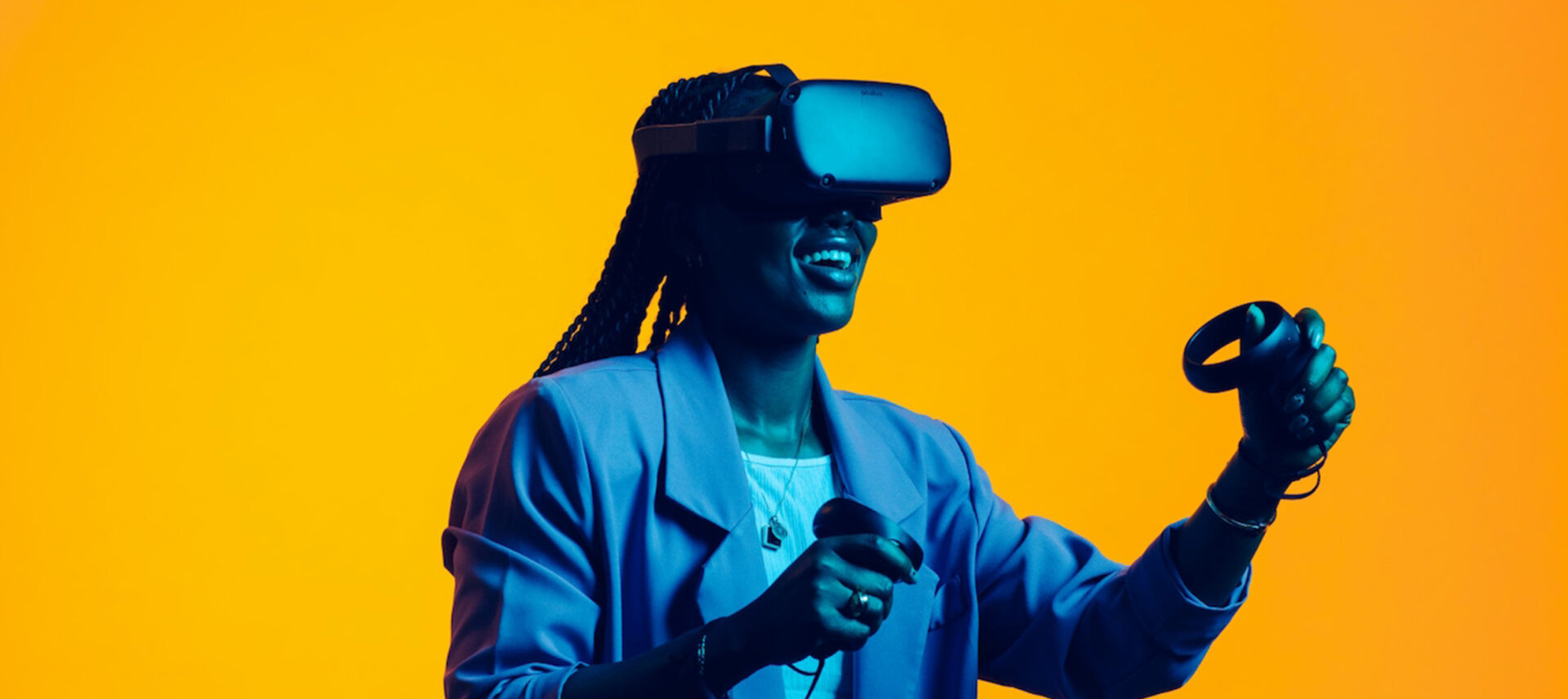
Article
3 Emerging Benefits of Incorporating VR/AR Into Product Development
Virtual and augmented reality may not be a component of your end product, but discover potential benefits of incorporating it into your development process.
It wasn’t long ago that the idea of integrating a fridge or toaster with the internet seemed far-fetched. But now, considering how to incorporate smart technology and the IoT is more of a rule than an exception.
VR and AR technology is the next frontier to conquer. And since positive brand interactions always lead to better business outcomes, you need to consider how to integrate this emerging technology into your product development roadmap.
That idea might give you pause, especially since current conversations about VR and AR tend to focus on the viability of the Metaverse and other ventures. But virtual and augmented reality technologies have come a long way in recent years. And they’re about much more than creating an avatar and walking around in a digital space that is still under development.
Consumer brands, medical device manufacturers, experience designers, and industrial engineers all need to consider how incorporating VR/AR might benefit their organizations and end users. And even if there’s no good reason to add VR/AR technology to your product itself, using it in your product development process could still be tremendously valuable.
Here’s how.
1. Slash Your Product’s Prototyping and Testing Spend
Creating high-functioning prototypes — and testing/validating them against regulatory, manufacturing, and usability guidelines — is an integral part of product development. It’s especially necessary when you’re developing intricate, multi-faceted products or experiences with a number of moving parts. However, despite its necessity, there’s no denying that prototyping and testing are pricey.
In general, the more prototypes and rounds of testing your product requires, the more substantial the financial outlay. Using VR and AR can provide a legitimate financial workaround that still enables your product development team to test performance in a virtual setting and iterate easily.
Specifically, this happens through digital twinning. Designers create digital versions of a desired product, environment, or experience and then use VR/AR tools to interact with it in realistic ways. By using a digital twin, you can:
- Evaluate the spatial components of a design. For example, we used this during our work with Home Run Dugout to assess and refine the layout of their immersive entertainment facility.
- Take a product through its entire lifecycle to see how it will function at each stage of life.
- Make sure component parts fit together correctly and function as intended.
- Improve engineering understanding by super-imposing simulation results onto physical parts and integrating with sensor data to provide real-time analysis
- Conduct user and usability testing to ensure the product will be appealing to your audience.
While these cost-saving benefits are certainly enticing, a word of caution: You should never shortchange the prototyping and testing process, especially when regulatory guidelines are part of the equation. But using VR/AR can help you stretch your organizational dollars further without limiting the number of design cycles your product needs. These tools give you the freedom to test and validate for as long as it takes to arrive at the best result.
2. Connect Users to Your Products In Practical (and Imaginative) Ways
Successful companies know that identifying their audience’s unmet needs — and meeting those needs with innovative new products — is the cornerstone of an effective growth strategy. Unfortunately, the stigma surrounding VR and AR has led many product developers to discount its potential.
Virtual and augmented reality may not be right for every product or every user. But dismissing it out of hand could mean missing out on opportunities to surprise, delight, or empower your audience.
Virtual and Augmented Reality in Action
Here are a few ways that VR and AR could add (or are already adding) value for users in a variety of industries. As you review these use cases, think about how VR/AR could enhance the user experience of your next product.
- Virtual manuals and instructions. With the help of VR headsets, AR glasses, and mobile apps, users will increasingly access interactive labels, instructions, and step-by-step guides that bring the how-to process to life. These technologies can be used for anything from putting IKEA furniture together to helping a factory worker set up new equipment.
- Professional training and development. Most people learn best by doing. VR/AR could allow a surgeon to test a new medical device in a virtual environment before using it for the first time on a patient. New assembly line workers could virtually experience the fast-paced environment they’ll be moving around in before going live on the floor. And employees of all kinds could participate in emergency simulations to practice how they’ll respond.
- Online shopping. There are also a host of consumer-related VR and AR uses, many of which are already becoming mainstream. AR mirrors, glasses, mobile apps, and filters give shoppers a hyper-personalized consumer experience. VR/AR makes it possible to try on a pair of jeans virtually, design one’s own sneakers, visualize how a new couch will look in the living room, or see what it would look like to change hairstyles or makeup applications.
As you can see, there are many opportunities to use VR and AR to tailor your product to your audience’s needs.
3. Shake Up Your Industry With Bold, Immersive Experience Design
As demonstrated in the last section, many industries have already incorporated components of virtual and augmented reality into their product design process. But the next stage will include products that engage more of our senses so we can more fully interact with the virtual world. This begs the question: How can designers merge real and virtual design elements to create memorable and immersive experiences?
Your product developers do not have to look too far for inspiration. Some ways other industries are leveraging the immersive potential of this technology that may spark inspiration for product developers include:
- Some museum exhibits are incorporating VR or AR to make guests feel like they’re stepping into a painting or diorama.
- Architects can use VR/AR to bring their blueprints to life and see how various spaces actually function IRL.
- Students can step into the mouth of a volcano, feel the effects of climate change, dissect a frog, or conduct lab experiments.
The technology is already here, but it’s not ubiquitous quite yet. And that means now’s the time to think through how to harness it for your industry and products — or risk getting outpaced by the competition.
Factor In the Value VR/AR Could Add to Your Next Product
If you’re looking for ways to level up your product development roadmap and set your portfolio apart from the competition, it’s time to seriously consider adding virtual and/or augmented reality capabilities to the mix. These technologies aren’t just trendy. They have the potential to transform how companies approach product development for years to come.
Still, it can be challenging to know where to go from here. So if you need some help assessing how (or if) to incorporate VR/AR into your roadmap, get in touch. We’re pretty dang good at imagining what’s possible.





